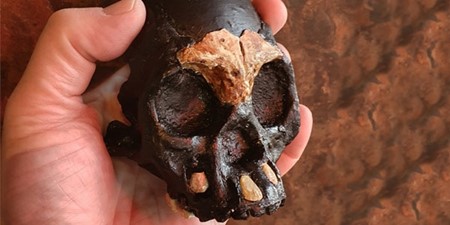By Aislinn Sanders

Homo naledi, the hominin discovery published in 2015, has sparked a heated debate for nearly a decade. The remains of at least 15 individuals, dated to approximately 300,000 years old, were found deep inside the Rising Star Cave system in South Africa by a team led by paleoanthropologist Lee Berger. These findings led many to wonder whether the hominin species was intelligent enough to perform intentional burial or if the assemblage represented unwitting individuals involved in a ‘death trap’ scenario. With brains about one third the size of Homo sapiens, theories pointed against the capacity to perform intentional burial within the cave system. New evidence, however, seeks to put the debate to rest.
In a lecture hosted by the Carnegie Institution of Science in Washington, D.C., on December 1st, 2022, Berger announced an exciting new revelation: evidence of fire within the cave system. According to Berger and his team, at least two of the underground chambers in the Rising Star system displayed burned and blackened areas of ceiling and stalactites, and substance which appeared to be soot particles dotted the sheet rock. Excavations in nearby cave systems led by paleoanthropologist Keneiloe Molopyane also found remnants of fireplaces, including bits of charred wood and bones. Additionally, Berger’s team also found remains from another fireplace in a different cave chamber where Homo naledi fossils have been found.
The new pieces of evidence have not yet been examined by other scientists and the burned material has not been dated. Paleoanthropologist W. Andrew Barr, who was not involved in the study, is not so certain about these conclusions. According to Barr, “[dating the materials is] an absolutely critical first step before it will be possible to speculate about who may have made fires for what reason.” Archaeologist Sarah Hlubik, who was also not involved in the study, would like to see the new materials examined to determine whether the darkened areas represent mineral staining or burning.
For now, the new findings cannot conclusively close the debate. Berger, however, is hopeful and has teased even more new findings about the hominin on his Twitter (https://twitter.com/LeeRberger).